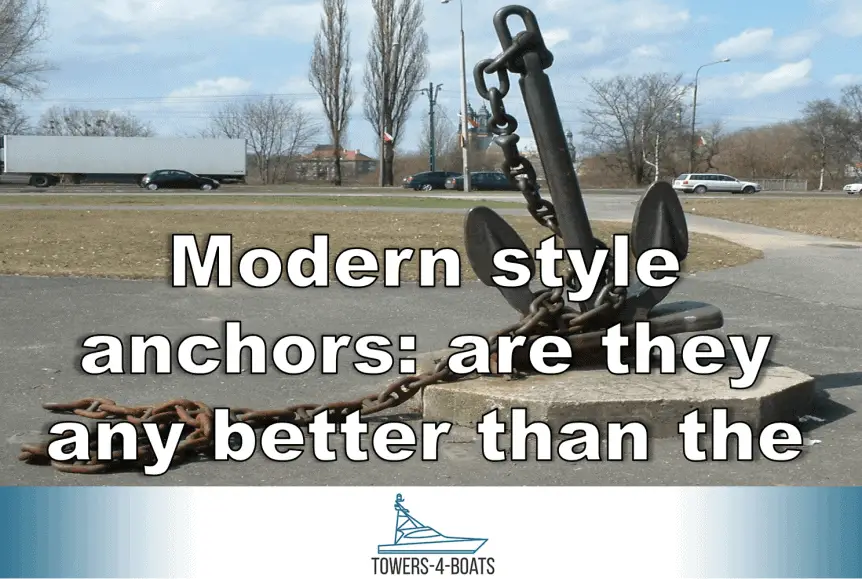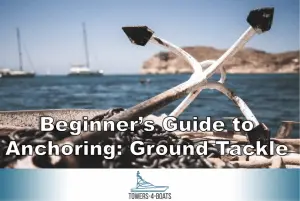Modern Anchors Offer Big Improvements Over Classics
At first glance, anchors seem like one of the least interesting pieces of technology on your boat. It’s just a big metal hook that you throw overboard. Some boaters rarely use their anchors, while others use them every day of the year. For cruisers traveling long distances and living “on the hook,” anchors are one of their most essential pieces of safety equipment. A good anchor will mean the difference between a good night’s rest and constant stressful anchor watches.
While they may seem unsophisticated, there has been a lot of research and design put into new types of anchors since the mid-1980s. Anchors designed before this time are known as traditional or conventional anchors. Modern anchors have design features made possible by new manufacturing methods and years of testing.
Related Articles
Primer on Anchoring – Everything You Need to Know (The Definitive Guide)
How long should your anchor line be?
Beginner’s Guide to Anchoring: Ground Tackle
What Does an Anchor Need to Do?
To understand what makes modern anchors better, you need first to consider all of the tasks that an anchor is asked to do.
The first thing an anchor must do is fall to the seabed in the correct orientation. If the anchor lands upside down, it is less likely to set or dig in, correctly. If an anchor does land upside down, it should be designed in a way that forces it upright quickly when the boat pulls on it.
After an anchor hits bottom, its next job is to dig into whatever substrate is present. As the boat is backed down on the anchor to bury it in the bottom, it should give as much holding power as possible through a combination of the anchor’s own strength and the way that it digs into the bottom. Nearly all commercial anchors of the appropriate size provide fantastic holding power.
Once the anchor is set, the anchor should remain dug in should the direction of the pull change. For example, if the wind shifts, then the anchor should turn enough to accommodate the change in direction without popping out and losing its grip.
The last thing that anchors should do is reset themselves should they pop out of the bottom. This is the boater’s most-feared scenario. The anchor has popped out of the bottom and is no longer holding the boat, usually as a result of a sudden strong wind shift during a squall or frontal passage. While traditional anchors cannot be trusted to reset themselves after a failure like this, modern anchors commonly advertise themselves as excelling in this area.
Traditional Anchor Designs Explained
The classic method of anchor design mostly revolved around coming up with a design of hook for a specific bottom type. For mud and sand, a plow design was appropriate, like the CQR or Delta anchors. For grass or rocks, a hook was suitable, like a fisherman or a Danforth.
The most common small boat anchors to this day are Danforth anchors. Their folding flukes allow them to store flat, and they can dig into quite a few different types of substrates. Deltas are another popular anchor for boats with dedicated bow rollers.
Modern Anchors
The first modern anchor design came from Germany and was called the Bügel. It didn’t look like any other anchor at the time. It featured a thick roll bar atop a spade-shaped flat fluke. Bügels are still around, though they were never common in North America.
A much more popular design came from France, known as the Spade. While the Spade looks like a transitional anchor, its design is quite sophisticated. To ensure the anchor lands correctly each time, the roll bar is omitted in favor of a heavy lead ingot on the tip of the fluke. The fluke is concave-shaped to allow a heavy load and a deep dig into the seabed. The shank of the anchor is hollow, which increases manufacturing costs significantly but increases the effectiveness of the hefty fluke tip. Spades are very popular anchors to this day. Their biggest disadvantage is that they sometimes fit poorly on bow rollers due to their heavily curved shank.
The next famous modern design was the Rocna, designed by a New Zealand sailor. It’s a beefy anchor that combines some elements of the Bügel and Spade. It has a hefty roll bar and a weighted tip on a concave-shaped fluke. Rocnas are very well regarded anchors.
Both the Rocna and Spade have spurred many knock offs and competitors. Another brand of modern design that has become very popular recently is the Mantus anchor. It is a very similar roll bar anchor like the Rocna, but its bolt-together design allows it to be stored in a smaller space.
Independent Anchor Testing
Unfortunately for boaters, getting accurate information about how anchors perform in the real world is extremely difficult. Nearly all testing comes from the anchor manufacturers themselves. Oddly enough, those tests seem to rate their brands most highly.
Over the years, several magazines, including Practical Sailor and BoatUS, have performed various anchor tests. These tests provide a useful baseline to give buyers some ideas of how anchors work in different substrates and conditions. The trials are usually lacking bias but are performed under a set of carefully controlled conditions, very much unlike the conditions an anchor will experience during everyday service.
Several YouTube channels feature interesting anchor tests, some with underwater cameras showing you how the anchor performs in various scenarios. You can see how the anchors perform when the boat direction is reversed, simulating a failure and then reset scenario. It’s a great way to get a feel for what your anchor is doing and under what conditions you might run into trouble. YouTuber SV Panope is widely-known for these videos.
The internet is busting with anchor reviews, but many are highly suspect. Many bloggers, sailors, YouTube videos, and forum users rave about their anchors, but the quality of the information is questionable. Anchor companies have sponsored many blogs and YouTube channels. That’s not to say the anchors aren’t good, only that it’s tough for one boat to test multiple anchors over the course of cruising.
Can You Trust Any Anchor to Reset?
The bottom line is that no anchor can be trusted in all conditions. Modern design anchors feature better designs and more holding power for their size and weight. They will often set quicker and more reliably than a traditional anchor, and some may work in more types of bottom. Any anchor, once set correctly in the seabed, can provide incredible amounts of holding power.
But trusting an anchor to reset itself after failure is tricky business. If a boater suspects that the anchor may fail due to a wind or tidal shift, the safest solution is to use two anchors. Modern anchor users may scoff at that old-school solution, but removing the need for the anchor to reset itself entirely is the only fool-proof solution.
Conclusion
The most important considerations when picking an anchor are the types of bottom you plan on anchoring in and the weight of the anchor. If you will be leaving your boat at anchor overnight, or for anything more than a quick stop, you’ll want to have the biggest anchor you can fit on your boat. A starting point is to take the manufacturer’s recommended size for your boat and then move up one size higher.




